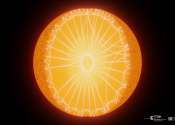Jupiter's upper atmosphere surprises astronomers
Using the NASA/ESA/CSA James Webb Space Telescope, scientists observed the region above Jupiter's iconic Great Red Spot to discover a variety of previously unseen features. The region, previously believed to be unremarkable ...









